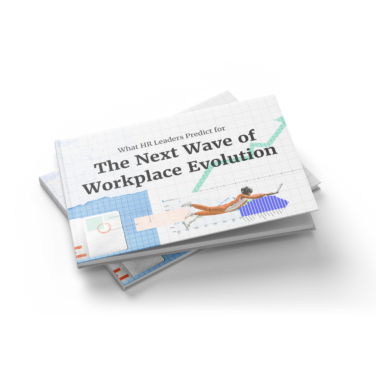At a glance:
- 100% of new hires cite flexibility as a key factor in joining
- 7x increase in job applications since launch
- 95%+ of roles eligible for flexible work
- 15 new global hiring markets added since implementation
Beyond Hybrid — A Reimagined Work Model
When Akamai Technologies introduced its “FlexBase” model in the wake of the pandemic, it wasn’t an emergency fix — it was an intentional evolution.
"We weren’t solving a problem," says Anthony Williams, EVP and Chief Human Resources Officer. “We were building on a moment of change to create something more sustainable”.
Rather than enforce rigid hybrid schedules, FlexBase allows the vast majority of Akamai employees to choose where they work — from an Akamai office, home, or elsewhere — based on where they do their best work. The guiding principle? Empower people to choose their environment, and productivity will follow.
Designing for Scale: 95% + Flex Eligibility
Akamai evaluated every role in the organization — not the individuals in them — to determine whether on-site presence was functionally required. An outside consultant helped assess the work, and the results were clear: at least 95% of employees could perform their roles flexibly.
This expansive eligibility unlocked access to new markets.
“We’ve added 15 new hiring markets globally in the last three years,” says Williams. “That’s allowed us to find niche tech talent faster and in places we previously hadn’t been looking”.
Talent attraction, retention & global equity
The outcomes speak for themselves:
- 7x more applications for open roles
- Global consistency across policy, with regional flexibility for connection (e.g., Asia-based employees choosing the office for late-night calls, or Europeans using air-conditioned offices during summer)
- Sustained diversity, if not accelerated. The policy has helped maintain, but not significantly shifted, performance on DEI metrics.
New hires consistently name flexibility as a deciding factor in accepting roles, and current employees benefit from both autonomy and structure.
“We’ve created virtual office hubs for locations where we don’t have physical offices, allowing employees to gather quarterly for networking and development,” Williams said.
Culture and change management
One of the keys to the success of FlexBase has been thoughtful change management. Williams acknowledges that shifting from a traditional model required intentional effort.
“Many leaders grew up in a face-to-face work culture. We had to communicate clearly, listen often, and reinvest the savings into employee support programs,” he said.
The company also surveys employees quarterly — not just on satisfaction, but on suggestions. That input directly influences evolving policy and practices.
Space reimagined
While most companies don’t publicly cite office usage as a reason they implement return to office mandates, data from Resume.org shows that roughly one third of the 900 business leaders they surveyed indicated that lease agreements influenced their RTO strategy.
While many have mandated a structured hybrid approach, what the market sees is a lack of buy in from employees. A report from Flex Index showed that while the number of required in office days has increased since Q4 of last year, the number of days actually worked in office by employees has not.

So while office utilization sits somewhat static, leaders now have to navigate a different question. What do you do with the space?
For Akamai, many real estate footprints have been redesigned — or retired.
“Roughly half of our offices have been reconfigured to support a more transient population,” Williams says. “Where usage didn’t justify the space, we closed offices and redirected funds to employee experience.”
Productivity holding steady or gaining ground
So much of the remote/flexible work conversation has been focused on productivity. LinkedIn is alight with arguments over whether people are more or less productive in office settings vs their homes dressed in their sweatpants.
But as we’ve covered on numerous occasions in the past, this is the wrong area of focus.
“If you’re a manager whose focused on how the work gets done and not what the work is getting done, you’re focusing on the wrong thing,” said Chris Williams, former VP of HR at Microsoft on a recent episode of the People Managing People podcast. “It’s not about where someone does it or whether they do it standing on their head, what matters is whether the work is getting done and is the quality of the work right?”
Performance-wise, Akamai echoes this, with Williams seeing at minimum a neutral impact on performance as a result of FlexBase — with growing confidence in a productivity uptick. While the company is still developing KPIs to measure outcomes more precisely, the indexed data supports sustained performance without loss of quality or output.
In the end, the direction of travel for the workplace of the future is not tethered to location unless it needs to be. Research from Stanford researcher Nick Bloom suggests that while we may be seeing a flattening of the curve toward remote work in 2025, it’s unlikely that will persist given the number of office leases expiring in the next three years.
If you find yourself in that camp, now is a good time to start thinking about what work looks like and Akamai’s FlexBase is one approach to keep an eye on.
We believe the future is flexible. But that future only works if you keep listening, learning, and evolving.
Takeaways for HR Leaders
- Flexibility is a differentiator: Consistency, not extremity, is what attracts talent.
- Change management is essential: Communication, feedback, and investment build trust.
- Workplace evolution is global: Context matters, but the principles of autonomy and belonging are universal.
- Space should serve culture: Rethink real estate as a resource for collaboration, not compliance.
What's Next?
If you want to keep learning about the latest practices, trends and expert insights on standing up flexible workplaces, sign up for the People Managing People newsletter. You'll insights all the latest news and content straight to your inbox.



